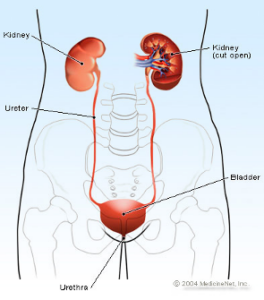Itching “down there” can drive any woman crazy!
We’ve all heard about yeast infections, one of the most annoying female complaints ever. It’s a very common problem—most women (75%) will get at least one in their lifetime.
WHAT EXACTLY IS A YEAST INFECTION?
A yeast infection is caused by a special germ called a fungus (specifically, Candida Albicans). Yeast lives in harmony with other bacteria on the skin and in the vaginal environment. These bacteria (flora) are protective to us.

Unfortunately, there are times something goes wrong in the vaginal environment and changes the harmony!
The yeast, being a true parasite, then overgrows and takes over the environment—invading the tissues, irritating them, and causing a most uncomfortable situation for a woman… burning and itching in the groin, on the outside lips of the vagina (vulva), and inside the vagina.
Have you ever seen a yeast mould on old bread grow over a couple of days? Exactly…
TRIGGERS
Here is a list of things that often change the vaginal environment and cause the overgrowth of the yeast:
- Moist, wet, damp environment – that’s why yeast loves tight clothes, tight pants, stockings, swimsuits, hot tubs, douches
- Sugar – sodas, sweets, diabetes. Yeasts love sugar!
- Hormonal excess – pregnancy, oral contraceptive pill, during your period
- Low immunity – when your body can’t fight away the yeast: for example, when AIDS, cancer, steroids, diabetes, stress/lack of sleep are present
- Antibiotics – changes the balance of the natural bacteria living in that environment
- Other STDs – wet, infected home invites the yeast
- Oral sex
SYMPTOMS
- Itching – don’t all women know this?
- Vaginal discharge – white, clumpy (curd-like), usually no smell.
- Redness and swelling
- Burning, soreness – especially during sex or when the urine touches the outside of the vagina
- Rash on vagina – small, fine bumps
WHAT YOU CAN DO
You can try these remedies at home but, to be honest with you, most times you’ll need a doctor:
- 1. Keep the vagina “ventilated”! It sounds funny but it’s very important. This prevents the area from getting too moist.
- 2. Eat foods rich in the good bacteria that help to keep the vaginal environment in harmony – plain yogurt (unsweetened, not the sugary ones), probiotics (available at a natural health food store)
- 3. Creams like Canesten, Vagisil may help especially the outside of the vagina, but if it’s internal, stronger medicines will be needed
Tip – If there are other associated digestive problems, rashes on hands, under breasts, skin folds etc., it may be useful to do a candida cleanse.
WHEN TO SEE DOCTOR
- If those measures don’t help within 24 hours, then see a doctor before it gets unbearable!
- If it’s your first time having these symptoms – seek an accurate diagnosis
- Also, if the yeast infection is recurrent, it’s very important that you make an appointment right away.
Your doctor should perform a vaginal examination.
I know this is not the most pleasant thing in the world, but it is very important because oftentimes more than one infection may coexist. For example, chlamydia and gonorrhoea may present similarly but if they aren’t treated in a timely fashion they can have significant consequences.
Beware – Not every discharge is a yeast infection!
TREATMENT
Your doctor would normally prescribe vaginal inserts, cream, and possibly an oral medication. Completing treatment is important to prevent early recurrence.
Most women respond very well and quickly with treatment and won’t generally have further problems unless there is something predisposing her to infection.

Note that men may have yeast on their penis without any symptoms at all. You may want to consider having your husband treated as well, especially if the infection is recurrent.
It follows then, that if you revisit the scene of the crime (the cause of the infection in the first place), then the problem will likely return.
- Look at what you’re eating – sugary, yeast-filled foods
- Look at what you’re wearing – tight clothes, dry underwear, cotton underwear
- Avoid douches, scented pads, bubble baths, etc.
- Change wet swimsuits and exercise clothes
- Change tampons and pads often
- Avoid hot tubs, hot baths
RECURRENT INFECTIONS
If a yeast infection occurs more than four times per year, your doctor will assess you for diabetes, HIV, or possible partner reinfection.
You don’t have to let yeast infections bog you down. Prevention is the best cure. If you already have the symptoms, simply go in and see your doctor so you can recover quickly.
Serving God and the elderly are two of Dr. Jennice’s passions. A house call doctor and health educator, she has been a Christian from her youth.






